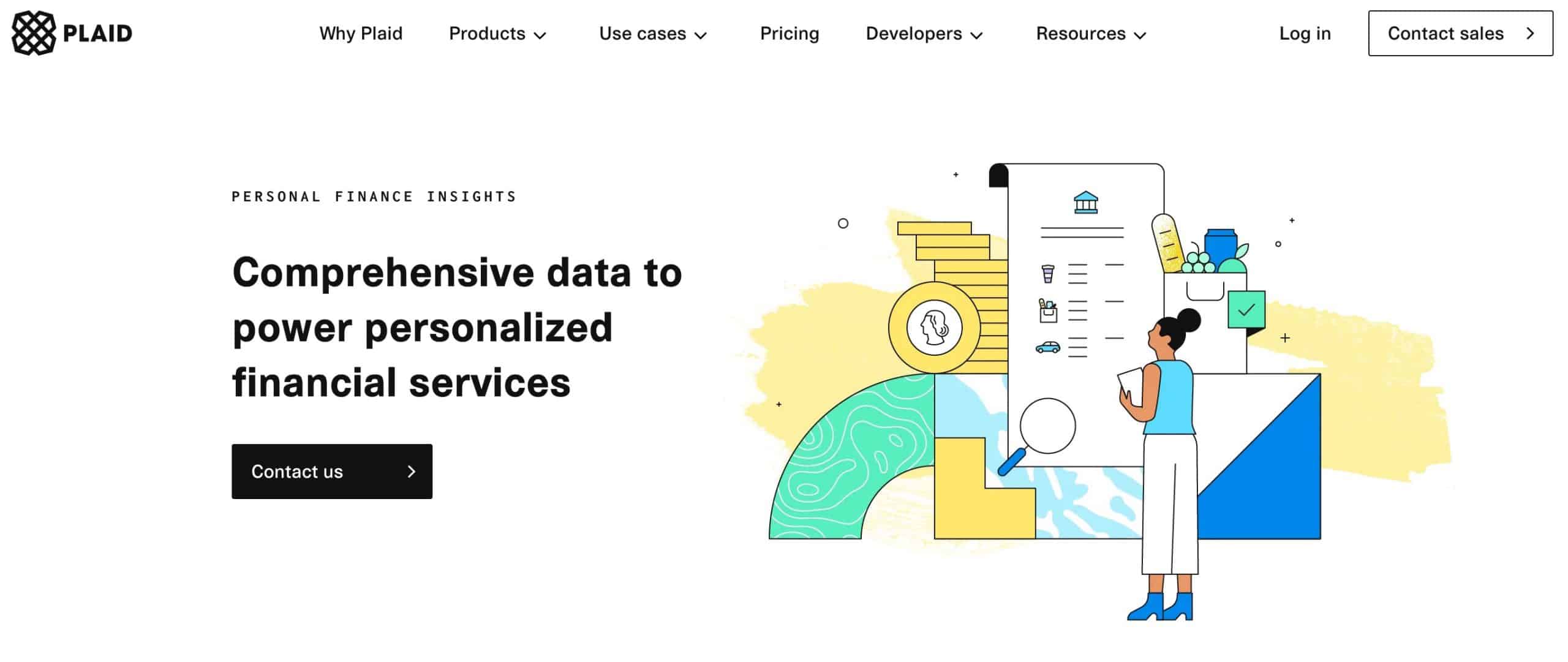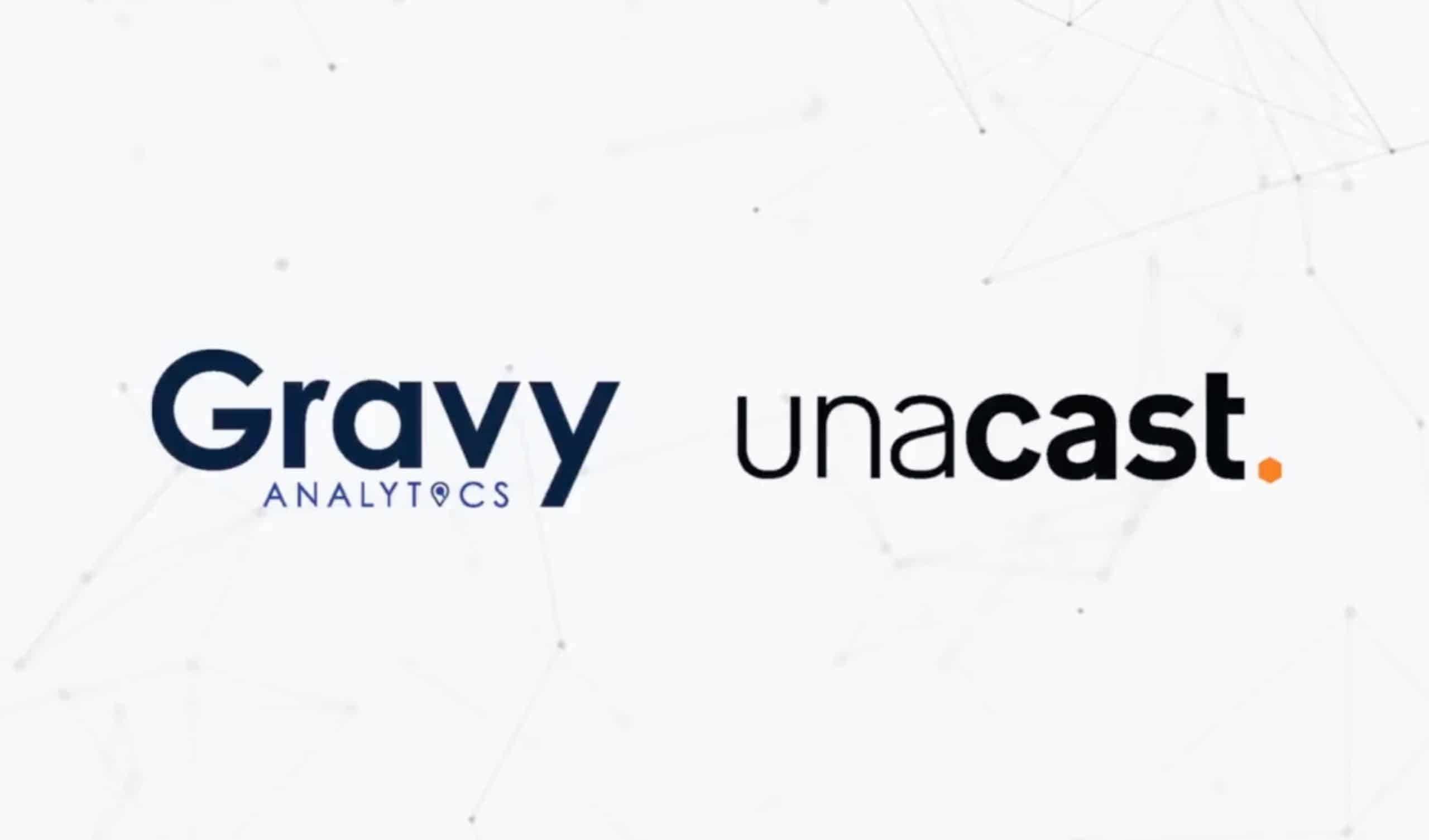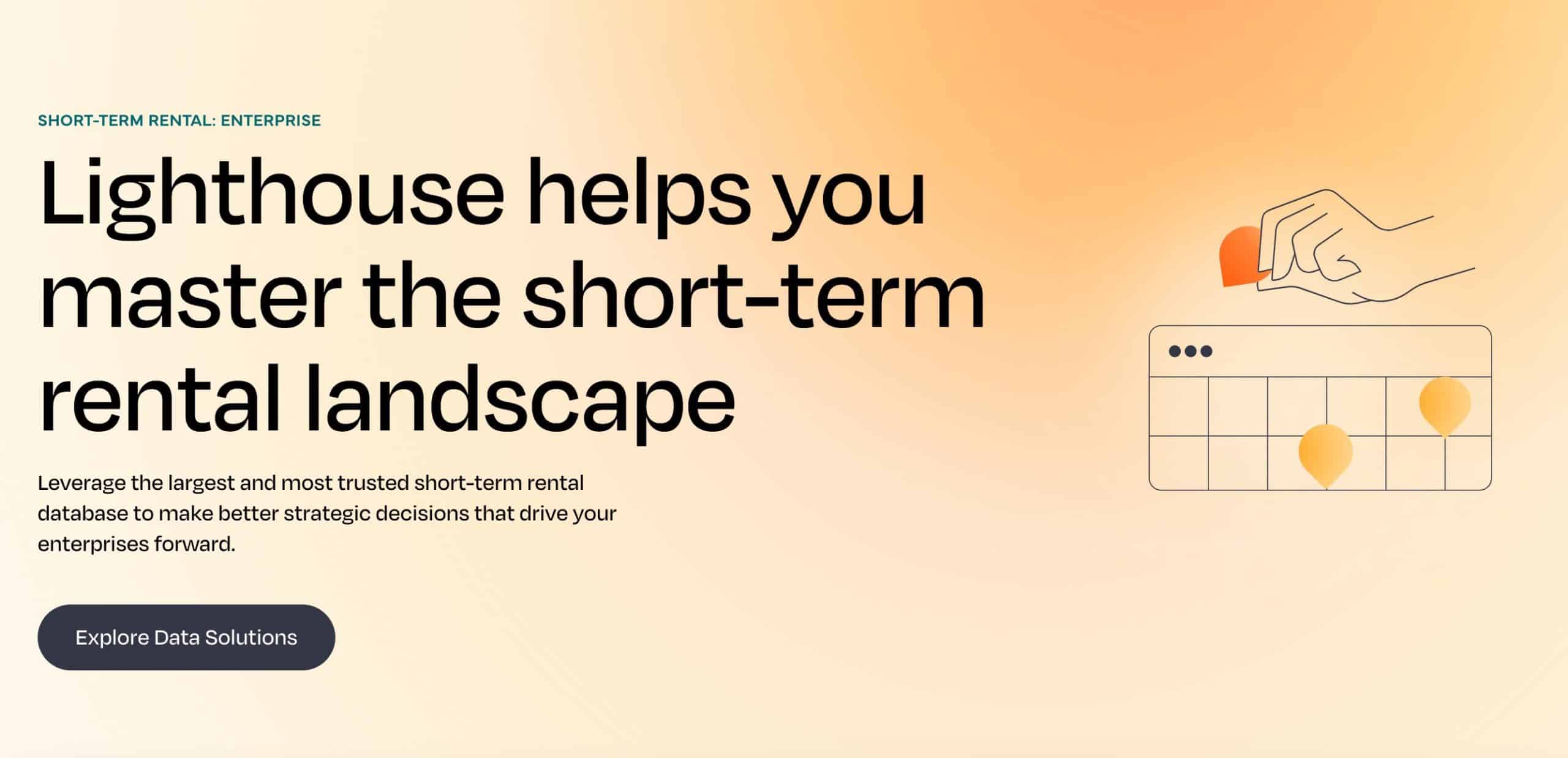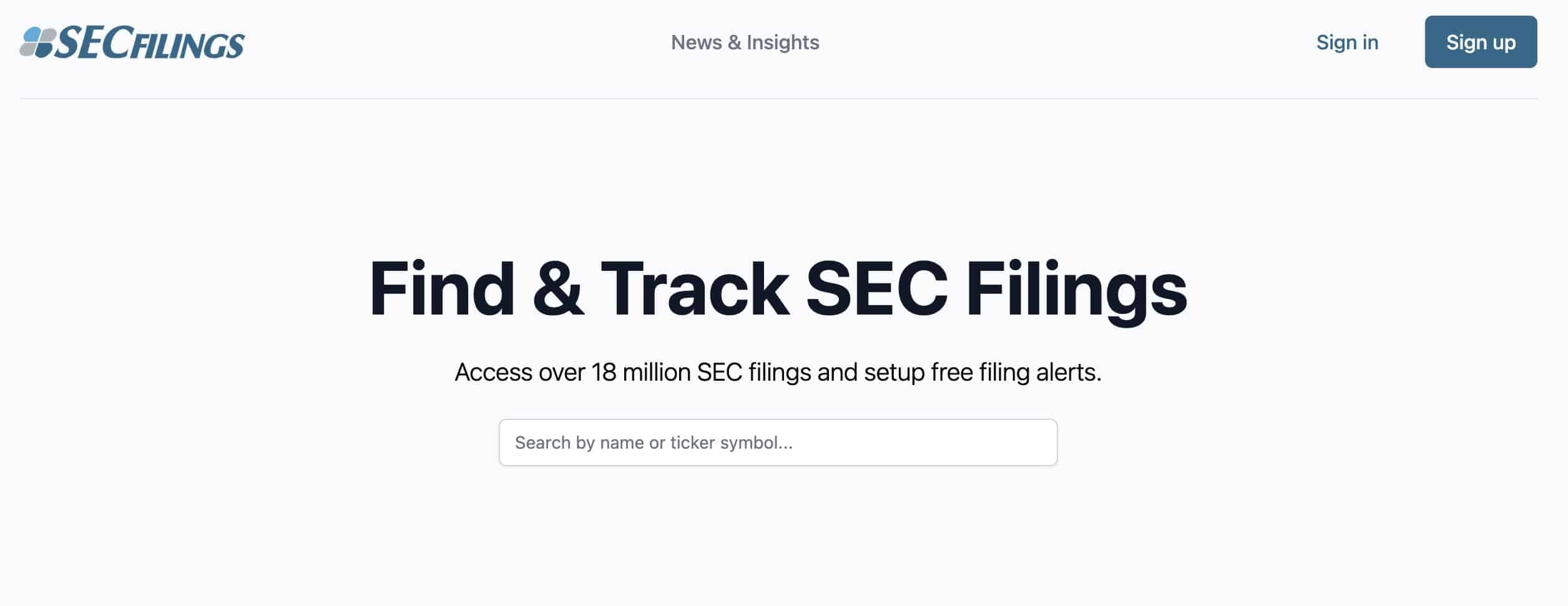Alternative data is revolutionizing decision-making across industries, offering unique insights beyond traditional sources. By unlocking real-time trends, behavioral patterns, and hidden opportunities, businesses and investors gain a competitive edge.
Explore the top alternative data providers shaping this landscape, each delivering cutting-edge tools to transform raw information into actionable intelligence.
Alternative Data Providers
- Benzinga Pro – Benzinga Pro offers customizable real-time news, market analysis tools, and instant updates through its audio squawk feature. It’s ideal for traders seeking actionable insights and advanced charting tools for smarter decisions.
- AltIndex – AltIndex provides a multidimensional analysis of market trends using diverse datasets like social sentiment and app downloads. Its intuitive dashboard and AI-driven stock signals are invaluable for investors aiming to diversify and make data-backed decisions.
- Plaid – Plaid connects applications to consumer financial data, enabling businesses to retrieve transactional insights. This platform empowers users to develop tailored financial tools while maintaining compliance with strict data security standards.
- Gravy Analytics – Gravy Analytics specializes in analyzing real-world consumer behavior through location data. It helps marketers, real estate developers, and retailers optimize strategies by delivering insights into foot traffic and mobility trends.
- Lighthouse – Lighthouse delivers actionable data on short-term rental trends, offering tools for pricing optimization and market performance tracking. It’s ideal for property managers and investors in the rental market.
- SECFilings.com – SECFilings.com provides access to millions of SEC filings, helping investors assess financial health and compliance. Its database is an essential resource for transparency and detailed corporate analysis.
Alternative Data Providers
Alternative data platforms have revolutionized the way businesses and investors approach decision-making by offering unique insights that go beyond traditional data sources. Below are six notable alternative data providers, each playing a pivotal role in unlocking actionable intelligence across industries.
1. Benzinga Pro – Your Gateway to Real-Time Financial Insights
Benzinga Pro is a real-time financial news and research platform designed to empower traders and investors with timely information and analytical tools. Its customizable newsfeed allows users to filter updates by categories such as market sectors, asset classes, or specific companies, ensuring access to the most relevant information. The platform’s audio squawk feature delivers live, audible news alerts, enabling users to stay informed without constant screen monitoring.
Beyond news delivery, Benzinga Pro offers advanced market analysis tools, including stock screeners and detailed charting capabilities. These features assist users in identifying trading opportunities and making informed decisions. Additionally, the platform provides a calendar of upcoming events, such as earnings reports and economic releases, helping traders anticipate market movements.
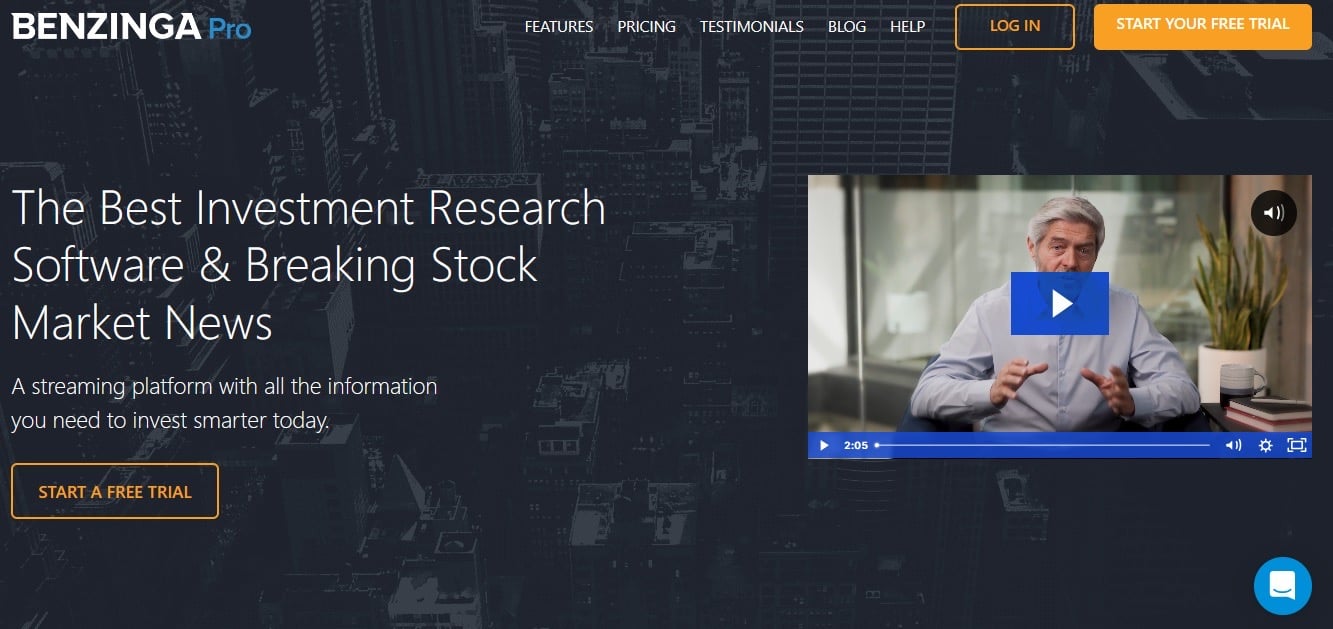
The platform’s user-friendly interface ensures that both novice and experienced traders can navigate its features with ease. Real-time alerts and notifications keep users updated on significant market developments, allowing for timely responses to emerging opportunities.
Benzinga Pro also fosters a community of traders and investors, offering chat rooms and forums where users can share insights, strategies, and discuss market trends. This collaborative environment enhances the overall trading experience by facilitating knowledge exchange among peers.
In summary, Benzinga Pro serves as a valuable resource for those seeking to stay ahead in the fast-paced financial markets. Its combination of real-time news, analytical tools, and community engagement provides a well-rounded platform for informed trading and investment decisions.
The pricing plans include the Basic Plan at $37 per month, offering Nasdaq Basic real-time quotes, a full newsfeed, chat, movers, watchlist alerts, and access to Benzinga premium articles. The Essential Plan, priced at $197 per month, includes all the features of the Basic Plan along with a real-time scanner, audio squawk for equities and options, a calendar, signals, and additional unlockable bonuses.
For $147 per month, the Streamlined Plan provides all the features of the Basic Plan, enhanced with advanced newsfeed filtering and audio squawk for equities and options.
- Real-time newsfeed with customizable filters
- Audio squawk for instant market updates
- Comprehensive tools for traders of all levels
- High cost for advanced features
- Limited coverage for global markets
- Overwhelming for beginners without trading experience
2. AltIndex – Overall Best Alternative Data Provider
AltIndex is an advanced platform that transforms diverse data points into actionable insights for investors. By aggregating information such as website traffic, app downloads, customer satisfaction metrics, and social media sentiment, AltIndex provides a multidimensional view of company performance.
The platform employs artificial intelligence to analyze thousands of stocks daily, delivering precise buy or sell signals. These insights are backed by both traditional and alternative data, ensuring reliability and depth. AltIndex’s dashboard is designed for ease of use, offering customizable alerts and stock performance visualizations to help users stay ahead of market movements.
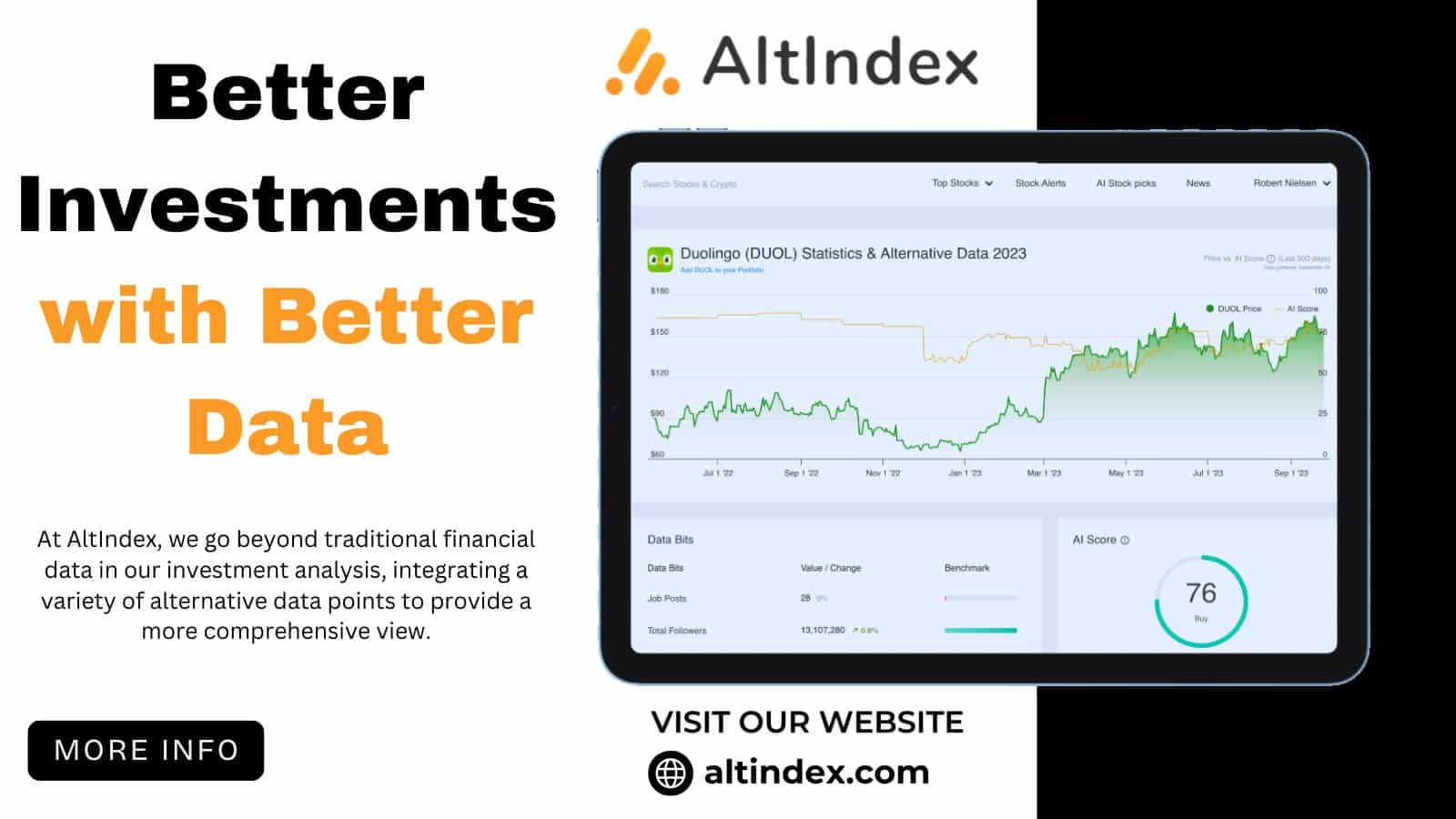
One of the standout features of AltIndex is its ability to identify emerging trends through real-time analysis of consumer behaviors. For instance, by monitoring spikes in social media activity or increased app engagement, the platform can signal early investment opportunities. This capability makes it a valuable tool for traders and portfolio managers looking to enhance their strategies with unique data perspectives.
AltIndex is particularly effective for users who want to diversify their investment approach. Its robust analytical tools and intuitive design make it suitable for both seasoned investors and those new to alternative data, ensuring better-informed decisions and improved returns.
- Real-time stock signals enhance decision-making
- User-friendly interface for easy navigation
- Comprehensive insights into emerging trends
- Limited coverage for niche industries
- Heavy reliance on AI-driven analysis
- Subscription cost may deter beginners
3. Plaid – Best for Financial Transaction Insights
Plaid is a financial technology platform that simplifies access to consumer financial data. It connects applications to bank accounts, credit cards, and other financial services, enabling seamless financial transactions and insights.
Trusted by leading fintech companies, Plaid powers applications that help users manage spending, monitor financial health, and optimize investments.
The platform’s secure APIs allow businesses to retrieve transactional data in real-time, providing a clear picture of consumer behavior. This data can be leveraged by investors to analyze trends in spending habits, which often correlate with broader economic indicators. For example, a rise in discretionary spending on certain product categories could signal consumer confidence, while a decline might indicate cautionary economic trends.
Plaid also enables businesses to develop personalized financial tools. Companies can use Plaid’s data to create budgeting apps, credit score trackers, or investment analysis tools tailored to individual users. This level of customization enhances customer engagement and provides actionable insights for businesses seeking to refine their strategies.
With a focus on data security and compliance, Plaid ensures that all user information is handled ethically and transparently. Its robust framework makes it an essential tool for organizations aiming to stay ahead in today’s fast-evolving financial landscape.
- Secure APIs ensure data privacy
- Real-time access to transactional data
- Widely used by leading fintech companies
- Limited to financial data insights
- Requires technical expertise for integration
- Not designed for non-financial industries
4. Gravy Analytics – Best for Location Intelligence
Gravy Analytics specializes in location intelligence, offering insights into consumer behavior based on real-world movements.
By analyzing anonymous mobile location signals, Gravy provides data that helps businesses understand where people go, how they spend their time, and what influences their decisions.
For marketers, Gravy Analytics is a game-changer. It allows brands to create hyper-targeted campaigns based on real-world consumer journeys. For instance, a retailer might use Gravy’s data to identify foot traffic trends at competitor locations, informing strategies to capture market share.
Real estate developers also benefit from Gravy’s insights. By analyzing population movements and neighborhood activity, they can make informed decisions about property investments or development opportunities. Similarly, retailers can assess store performance by monitoring customer visits and dwell times, optimizing operations to drive sales.
Gravy’s location intelligence extends to competitive analysis, allowing businesses to benchmark their performance against industry standards. Its data-driven approach empowers companies to refine their strategies, ensuring they remain competitive in dynamic markets. Gravy Analytics is a powerful tool for organizations that want to bridge the gap between digital strategies and real-world consumer behavior.
- Accurate location-based consumer insights
- Enhances marketing with hyper-targeted campaigns
- Valuable for retail and real estate industries
- Privacy concerns with location tracking
- Not suitable for all business models
5. Lighthouse – Best for Short-Term Rental Data
Lighthouse focuses on short-term rental data, providing in-depth insights into property listings, pricing trends, and occupancy rates. It aggregates data from multiple rental platforms, offering a comprehensive view of the short-term rental market for property managers, investors, and analysts.
One of Lighthouse’s key features is its ability to track market performance in real-time. For example, it can highlight areas experiencing increased demand for short-term rentals, enabling investors to identify high-potential properties. Similarly, property managers can use Lighthouse to optimize pricing strategies based on seasonal trends and competitor analysis.
The platform’s analytics tools help users compare properties, assess profitability, and monitor occupancy rates across different regions. This level of detail allows stakeholders to make data-driven decisions that maximize rental income while minimizing risks.
Lighthouse is particularly valuable for investors looking to enter the short-term rental market or expand their existing portfolios. Its insights into market dynamics provide a competitive edge, ensuring users stay ahead of shifting trends. By offering actionable data, Lighthouse simplifies the complexities of managing short-term rental investments and enhances overall profitability.
- Detailed insights into rental market trends
- Optimizes pricing strategies for property managers
- Real-time market performance tracking
- Focused only on short-term rental data
- Requires subscription for full access
- Limited integration with other platforms
6. SECFilings.com – Best for Regulatory Filings and Disclosures
SECFilings.com is a vital resource for investors and analysts seeking detailed regulatory filings and corporate disclosures. The platform provides access to millions of documents submitted to the U.S. Securities and Exchange Commission (SEC), including annual reports, quarterly filings, and insider trading disclosures.
For investors, SECFilings.com is indispensable for assessing a company’s financial health and compliance. For instance, an investor researching a potential acquisition target can use the platform to review historical earnings reports, identify trends in revenue growth, and analyze management’s risk disclosures.
The platform’s searchable database is user-friendly, allowing users to filter filings by company, industry, or specific filing type. This functionality saves time and ensures that users find relevant information quickly. SECFilings.com also provides alerts for new filings, ensuring investors stay informed about developments that could impact their portfolios.
In addition to financial data, the platform offers insights into corporate governance practices and strategic initiatives. By analyzing filings related to mergers, acquisitions, or significant contracts, investors gain a deeper understanding of a company’s long-term prospects. SECFilings.com is a must-have tool for those seeking transparency and precision in their investment decisions.
- Access to millions of regulatory filings
- Essential for assessing financial health
- Timely updates on corporate disclosures
- Focuses only on U.S.-based companies
- No predictive analysis tools included
- Navigation can be overwhelming for new users
Alternative Data Explained
Alternative data refers to information collected from unconventional sources, offering unique insights that go beyond traditional datasets. Unlike conventional data such as financial statements or government reports, alternative data leverages non-traditional channels to provide a deeper understanding of market trends, consumer behaviors, and industry performance.

It has gained prominence as businesses and investors seek innovative ways to gain a competitive edge.
Sources of Alternative Data
- Consumer Transactions: Data derived from credit card purchases, online transactions, and e-receipts uncovers consumer spending patterns. For instance, aggregated transaction data can reveal a company’s performance before official quarterly reports are released.
- Geolocation Data: By analyzing mobile and GPS data, businesses track foot traffic to retail stores or specific locations, providing insights into consumer preferences and operational performance.
- Social Media and Online Behavior: Social media platforms, online reviews, and web activity offer sentiment analysis and real-time trends. Increased mentions or searches related to a product can signal rising consumer interest.
- Satellite and Aerial Imagery: Satellite images or drone footage can monitor agricultural yields, industrial activity, or retail traffic, indirectly reflecting economic conditions.
Alternative data is particularly valuable in the financial sector, where investors use it to predict market movements, assess company performance, and identify opportunities. Hedge funds often analyze geolocation and transaction data to anticipate earnings reports.
Beyond finance, industries such as retail, manufacturing, and logistics use alternative data for competitive analysis, market research, and strategic planning. For example, analyzing foot traffic data can guide retail location decisions, while monitoring social media trends can help gauge customer sentiment.
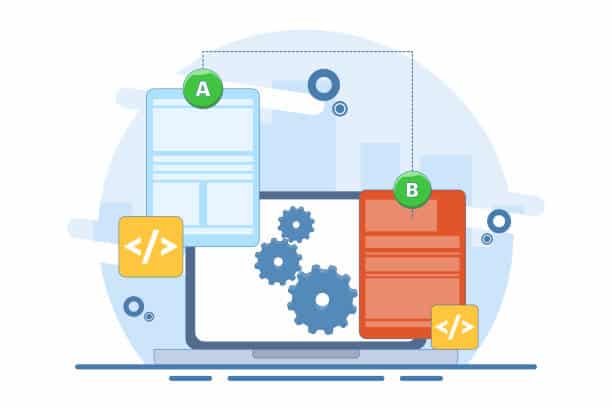
Despite its advantages, alternative data poses challenges. Integrating diverse datasets requires advanced analytical capabilities. Furthermore, ensuring data accuracy and maintaining privacy compliance are critical. Companies must navigate ethical considerations and adhere to strict regulatory frameworks to avoid misuse.
Alternative data has become a cornerstone for informed decision-making, enabling organizations to harness untapped insights for strategic growth.
Who Uses Alternative Data?
Alternative data, derived from non-traditional sources, has become a pivotal asset across various sectors. Its unique insights enable organizations to make informed decisions, anticipate trends, and gain a competitive edge.
Financial Institutions
Financial institutions, particularly investment firms, hedge funds, and asset managers, are heavy users of alternative data. They leverage diverse datasets such as geolocation data, credit card transactions, and satellite imagery to predict market movements and assess company performance.

For example, geolocation data can track foot traffic to retail outlets, offering early insights into quarterly sales figures. Similarly, analyzing satellite imagery of factory activity can reveal trends in production before official data is released. These insights allow financial institutions to develop informed investment strategies, optimize portfolio management, and improve risk assessments.
Corporations and Businesses
Businesses across various industries rely on alternative data to refine strategies, enhance operations, and stay competitive. Retailers use social media sentiment and online behavior data to understand consumer preferences, tailor marketing campaigns, and launch new products.

For instance, spikes in social media mentions or web traffic for specific items often signal emerging trends. Manufacturers utilize supply chain insights to anticipate disruptions, optimize inventory, and maintain smooth operations. These data-driven approaches allow businesses to quickly adapt to changing market conditions and outpace competitors.
Government Agencies and Policymakers
Government agencies leverage alternative data to enhance governance and policy-making. Geolocation data is used to monitor population mobility during crises like pandemics, helping evaluate the effectiveness of policy measures.

Environmental agencies rely on satellite imagery to track deforestation, urban sprawl, and climate change impacts. Additionally, economic indicators derived from alternative sources provide real-time insights into employment trends, inflation, and other metrics. By integrating alternative data, governments improve decision-making and resource allocation.
Insurance Companies
The insurance sector employs alternative data to better understand risks and offer personalized policies. Vehicle telematics collects driving behavior data, enabling insurers to create usage-based models where premiums align with habits.
Health insurers analyze wearable data to encourage healthier lifestyles and tailor coverage options. For example, customers logging consistent physical activity may benefit from reduced premiums. By leveraging these insights, insurers improve risk modeling, customer engagement, and claims accuracy.
Real Estate and Urban Planning
Real estate developers and urban planners use alternative data to guide critical decisions. Geospatial data combined with social media trends helps identify neighborhoods with rising property values or emerging commercial hubs.

Satellite imagery and mobility data provide insights into population density and urban development patterns, aiding infrastructure planning and real estate investments. These data-driven strategies enable sustainable urban development and informed planning for businesses and communities.
Healthcare Sector
The healthcare industry integrates alternative data to improve patient outcomes and operational efficiency. Wearable devices, such as fitness trackers, generate real-time health data, enabling early interventions in case of anomalies.
Pharmaceutical companies analyze global health trends and streamline drug development with alternative datasets. During pandemics, mobility and social media data provide insights into disease spread, guiding effective containment strategies. This use of alternative data is transforming healthcare delivery and public health policies.
Marketing and Advertising Firms
Marketing and advertising firms leverage alternative data to craft targeted campaigns and improve messaging. Social media sentiment, e-commerce trends, and online behavior analytics help refine promotional strategies and engage audiences.

For instance, ad agencies monitor customer feedback across channels to tailor campaigns for specific demographics. Geolocation data allows for hyper-localized advertising, making campaigns more relevant. These approaches boost customer engagement and maximize ROI.
Challenges Across Industries
Despite its benefits, alternative data presents challenges for organizations. Integrating disparate datasets requires advanced technology and expertise. Ensuring data accuracy is critical, as low-quality data can lead to poor decisions.
Privacy and consent are significant concerns, necessitating compliance with ethical and regulatory standards. Companies must balance leveraging insights with maintaining trust, ensuring responsible data practices in an increasingly data-driven world.
Alternative data continues to empower industries, driving innovation, improving decision-making, and providing a competitive edge in today’s dynamic landscape.
How Exactly is Alternative Data Used?
The utilization of alternative data involves two key stages: gathering and analyzing data, followed by acting on the insights derived. This process allows traders and businesses to make informed decisions, often gaining a competitive edge in their respective fields.
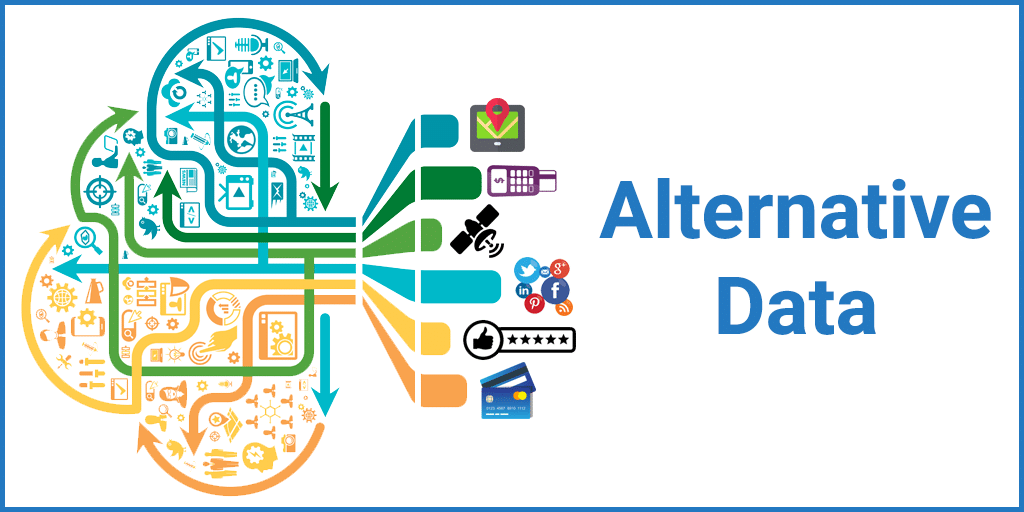
Data Gathering and Analysis
The first step involves sourcing relevant alternative data based on the user’s goals. These data sources vary widely, depending on the industry and specific objectives. Traders, for instance, might look at consumer behavior data, geolocation information, or even unconventional sources like flight tracking.
Consider the case of an investor researching acquisition opportunities. If a major corporation is rumored to acquire a promising startup, alternative data such as flight logs could provide critical early insights. For example, if a tech CEO’s private jet, headquartered in Silicon Valley, makes an unexpected trip to Berlin—home to a leading AI startup—this could signal ongoing negotiations.
This data, while indirect, can provide substantial clues about corporate activity, offering insights before any public announcement. Such information gives the investor a chance to anticipate the market reaction and position themselves strategically.
Making a Decision
Once the data has been analyzed and patterns identified, the next step is to determine how to act. Alternative data doesn’t just reveal positive opportunities—it also highlights risks. This duality enables both long and short trading strategies.

Referring back to the earlier example, the investor might decide to buy shares of the AI startup, betting on its value increasing once the acquisition is confirmed. Alternatively, if the data suggests potential issues, they could short stocks in a related sector.
The ability to pre-empt official announcements gives alternative data users a distinct advantage, allowing them to capitalize on opportunities and mitigate risks. This approach exemplifies how alternative data serves as a powerful tool for decision-making, particularly in fields like investment and corporate strategy.
Types of Alternative Data
Alternative data encompasses a broad spectrum of unconventional information sources, each offering unique insights. These data types vary depending on their origin, structure, and the specific use cases they support.
Transaction Data
This type of data is derived from consumer purchases, such as credit card transactions, e-commerce receipts, and point-of-sale systems. It provides real-time insights into consumer behavior, spending patterns, and market trends. For example, an uptick in transactions at a specific retailer might indicate a successful marketing campaign or the launch of a popular product.

Geolocation Data
Geolocation data tracks the movement of people or devices, often through GPS-enabled devices or mobile apps. It is widely used to analyze foot traffic at retail locations, monitor supply chain efficiency, and assess population mobility trends. Retailers can use this data to evaluate store performance, while investors may analyze it to predict quarterly earnings for brick-and-mortar businesses.
Social Media and Online Activity
Data collected from social media platforms, online reviews, and website traffic provides valuable sentiment analysis and trend identification. For instance, spikes in social media mentions about a product or service can signal increased consumer interest, which businesses can leverage for marketing or inventory planning.

Satellite and Aerial Imagery
Images captured by satellites or drones are a powerful source of alternative data. They are used to monitor industrial activity, track agricultural yields, or even measure the number of vehicles in a retailer’s parking lot. For example, satellite imagery of a mining site can reveal production levels, providing insights into commodity markets.
Web Scraped Data
Web scraping involves extracting publicly available data from websites, such as pricing information, job postings, or product reviews. This data can provide a competitive edge by revealing trends in pricing strategies, hiring patterns, or customer satisfaction.
Sensor Data
Sensor data includes information collected by IoT devices, such as smart meters, wearables, or industrial sensors. This data is useful for monitoring energy usage, health metrics, or machine performance, offering valuable insights for industries like healthcare, energy, and manufacturing.

App Usage Data
App usage data tracks user behavior on mobile applications. It reveals patterns in consumer preferences, app popularity, and user engagement levels, making it a valuable resource for companies in tech and advertising.
The diversity of alternative data sources allows businesses and investors to uncover insights that traditional data cannot, driving better decision-making and innovation across industries.
Does Alternative Data Improve Investment Decisions?
Alternative data has transformed investment strategies by offering unique insights that traditional sources often miss. It equips investors with tools to anticipate trends, uncover hidden opportunities, mitigate risks, diversify portfolios, and align with ESG goals. Below are five critical ways alternative data enhances investment decision-making.
Anticipating Market Movements
Alternative data enables investors to predict market trends ahead of official reports. Geolocation data, for example, tracks foot traffic to retail stores, providing early indications of sales performance. Similarly, satellite imagery of factories or shipping routes offers clues about production activity or trade flow, allowing investors to anticipate economic shifts.

Social media platforms are another invaluable source of real-time sentiment analysis. Platforms like Reddit and Twitter often signal market trends before traditional channels. A prime example is the GameStop surge fueled by WallStreetBets. Investors monitoring the platform noticed increased discussions and engagement, providing early cues to capitalize on the stock’s dramatic rise.
Uncovering Niche Opportunities
Alternative data helps investors discover opportunities in sectors or companies that may not yet be on the radar. Patent filings, for instance, highlight innovation in emerging industries. A wave of patents in renewable energy storage or AI technology could point to future growth areas, allowing early investments in promising companies.
Website traffic data is another powerful tool for identifying opportunities. An e-commerce platform experiencing a sudden surge in traffic might be on the cusp of significant growth. By analyzing this trend, investors can act before traditional metrics like earnings reports reflect the platform’s success.
Mitigating Risks
Investment risks are inherent, but alternative data allows investors to manage them more effectively. Satellite imagery can reveal disruptions in supply chains, such as port congestion or factory closures, enabling timely adjustments to investment strategies.

Weather data also plays a critical role in managing risks, particularly in agriculture and energy markets. For example, predictions of prolonged drought in key farming regions help traders hedge against supply shortages. Additionally, monitoring social media sentiment can act as an early warning system for potential public relations issues that could harm stock performance.
Enhancing Diversification
A well-diversified portfolio is essential for minimizing risk, and alternative data provides the insights needed to achieve this. Weather data informs decisions in agriculture and energy markets, while geolocation data highlights consumer behaviors in retail and real estate.
For example, tracking geolocation trends can reveal high-growth neighborhoods or hotspots for new businesses, guiding real estate investments. Similarly, app usage data identifies growing platforms in the tech sector, allowing investors to capitalize on emerging opportunities. These cross-sector insights ensure a balanced and robust portfolio.
Supporting ESG Strategies
Environmental, Social, and Governance (ESG) investing has gained momentum, and alternative data is critical for refining these strategies. Satellite imagery reveals environmentally harmful practices, such as deforestation or excessive emissions, which might otherwise go unnoticed.

Social media and news scraping tools offer insights into how companies are perceived in terms of social responsibility. This allows investors to avoid firms with poor ethical practices while supporting those with strong ESG initiatives. Aligning investments with sustainability goals not only meets ethical priorities but also reduces exposure to reputational risks.
Alternative data is more than just a supplement to traditional information—it is a vital asset for investors looking to gain a competitive edge, manage risks, and create diversified and sustainable portfolios.
How to Pick an Alternative Data Provider
Selecting the right alternative data provider is crucial for leveraging the full potential of non-traditional data in your decision-making processes. The choice involves evaluating the provider’s offerings, reliability, and alignment with your specific business or investment goals.
Below are key considerations for selecting the best alternative data provider.
Understand Your Objectives
The first step is identifying what you aim to achieve with alternative data. Are you looking to enhance investment strategies, optimize supply chains, or improve customer segmentation? Different providers specialize in various data types, such as geolocation, transaction, social media sentiment, or satellite imagery. Understanding your specific needs will help you narrow down providers who offer relevant datasets.

For instance, an investor focusing on retail trends might prioritize providers offering credit card transaction data or geolocation insights, while a logistics company may require data on shipping patterns and fleet tracking.
Assess Data Quality
High-quality data is the foundation of actionable insights. Evaluate the provider’s data for accuracy, consistency, and comprehensiveness. Poor-quality data can lead to flawed analyses and misguided decisions, undermining your objectives.
Ask the provider how the data is collected, processed, and verified. Ensure they follow rigorous quality checks and can provide historical data to validate trends. Reliable providers often offer sample datasets for testing, enabling you to gauge the data’s relevance and reliability before committing.
Consider Integration and Usability
The ease with which you can integrate the provider’s data into your existing systems is a critical factor. The data should be compatible with your analytical tools and workflows, ensuring seamless integration and minimal disruption.

Look for providers that offer user-friendly APIs, customizable dashboards, or plug-and-play solutions. Usability extends to the clarity of the data presentation—structured, well-organized datasets save time and reduce the risk of errors in analysis.
Evaluate Compliance and Privacy Standards
Alternative data often involves sensitive information, such as consumer behavior or geolocation data, making compliance with data protection regulations non-negotiable. Ensure the provider adheres to global privacy standards like GDPR or CCPA, depending on your operational region.
Ask about the data’s sourcing practices. Ethical and legally compliant providers obtain data transparently, with the necessary permissions or anonymization measures in place to protect user identities.
Explore Customization Options
Your business needs may evolve over time, so it’s beneficial to work with providers who offer customizable solutions. Whether it’s focusing on specific industries, geographic regions, or data points, flexibility ensures the provider remains relevant to your changing requirements.

Compare Pricing Models
Alternative data can be a significant investment, so consider the provider’s pricing structure. Some charge based on data volume, while others offer subscription-based pricing or custom packages. Ensure the cost aligns with the value the data provides and fits within your budget constraints.
Assess Provider Reputation and Support
A provider’s reputation reflects the quality of their offerings and their ability to deliver. Research client testimonials, industry reviews, and case studies to evaluate their track record. Additionally, consider the level of support they offer. Providers with responsive customer service and technical support can address issues quickly, ensuring smooth operations.
Conclusion
Incorporating alternative data into investment strategies offers a competitive edge by providing unique insights beyond traditional sources. By leveraging diverse datasets, investors can make more informed decisions, anticipate market trends, and uncover opportunities, ultimately enhancing portfolio performance and achieving superior returns.
FAQs
How do investors ensure the quality of alternative data?
Investors assess alternative data quality by evaluating its accuracy, consistency, and relevance. They often request sample datasets to test for reliability and may cross-reference with other data sources to validate findings.
What ethical considerations are involved in using alternative data?
Ethical considerations include ensuring data is sourced legally and respecting privacy rights. Investors must comply with data protection regulations and avoid using information obtained through invasive or unethical means.
How does alternative data integration impact existing investment models?
Integrating alternative data can enhance traditional investment models by providing additional insights. However, it requires advanced analytical tools and expertise to effectively incorporate unstructured data into existing frameworks.
What are the costs associated with acquiring alternative data?
Costs vary depending on the data's uniqueness, depth, and provider. While some datasets are freely available, others, especially those offering significant competitive advantages, can be expensive.
How is alternative data transforming investment strategies?
Alternative data enables more proactive and informed investment strategies by offering real-time insights and uncovering trends not visible through traditional data, leading to more dynamic and responsive decision-making.


